São Jorge Island – What to Visit and Points of Interest
The Island of São Jorge is located in the Azores archipelago and is part of the Central Group, along with Graciosa, Terceira, Faial, and Pico.
It has an area of 243.8 km², and its main distinction from other islands in the archipelago is the absence of any polygenetic volcanic buildings and its elongated shape, measuring 54 km in length and only 6.9 km in width.
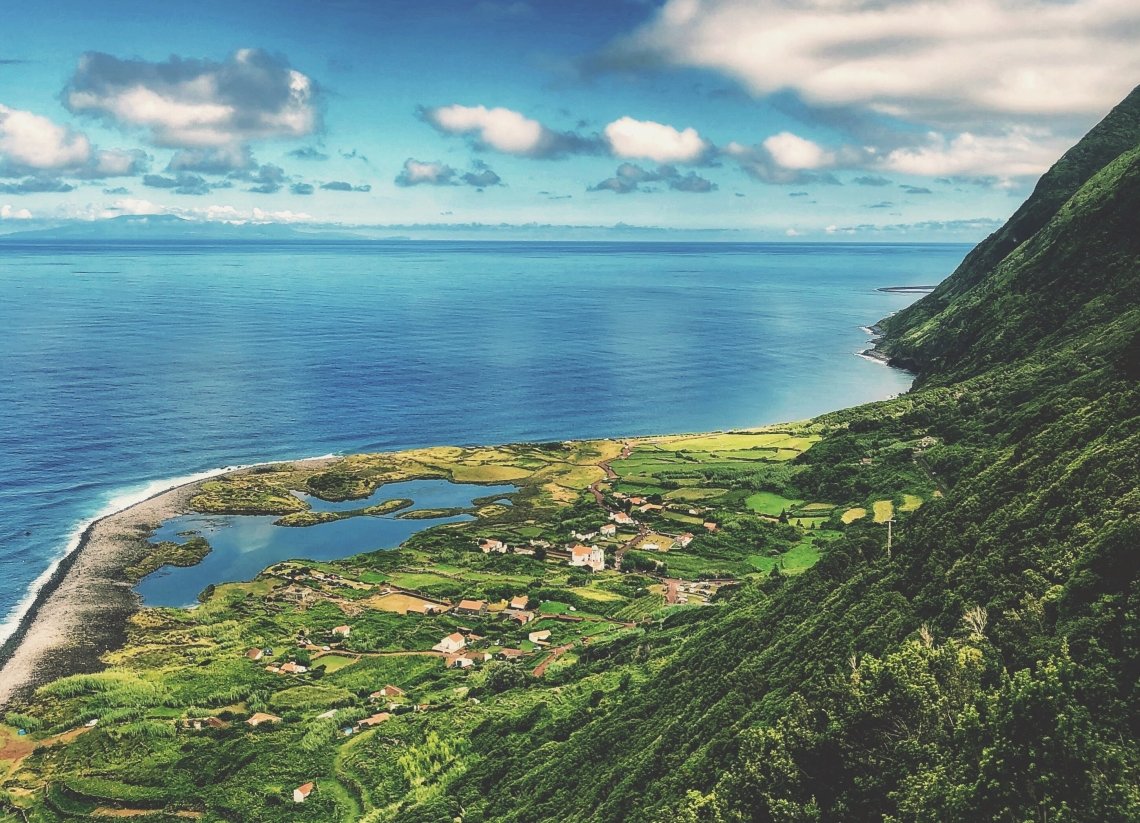
(C) Catarina Maia / @thecatarinamaia
The geological formation of this island was heavily influenced by successive volcanic eruptions, creating a landscape with strong basaltic features.
The island was populated starting in the 15th century, with two recorded subaerial eruptions on São Jorge Island in 1580 and 1808, as well as a submarine eruption off the island in 1964. Another point of influence is the scoria cones, such as Pico do Areeiro and Pico da Esperança.
As for the attractions of São Jorge Island, many adventurous tourists choose this island in search of breathtaking landscapes found in the beautiful fajãs, cliffs, and escarpments. It is no wonder it is known as the “Island of Fajãs”, with the predominance of green providing the perfect contact with nature.
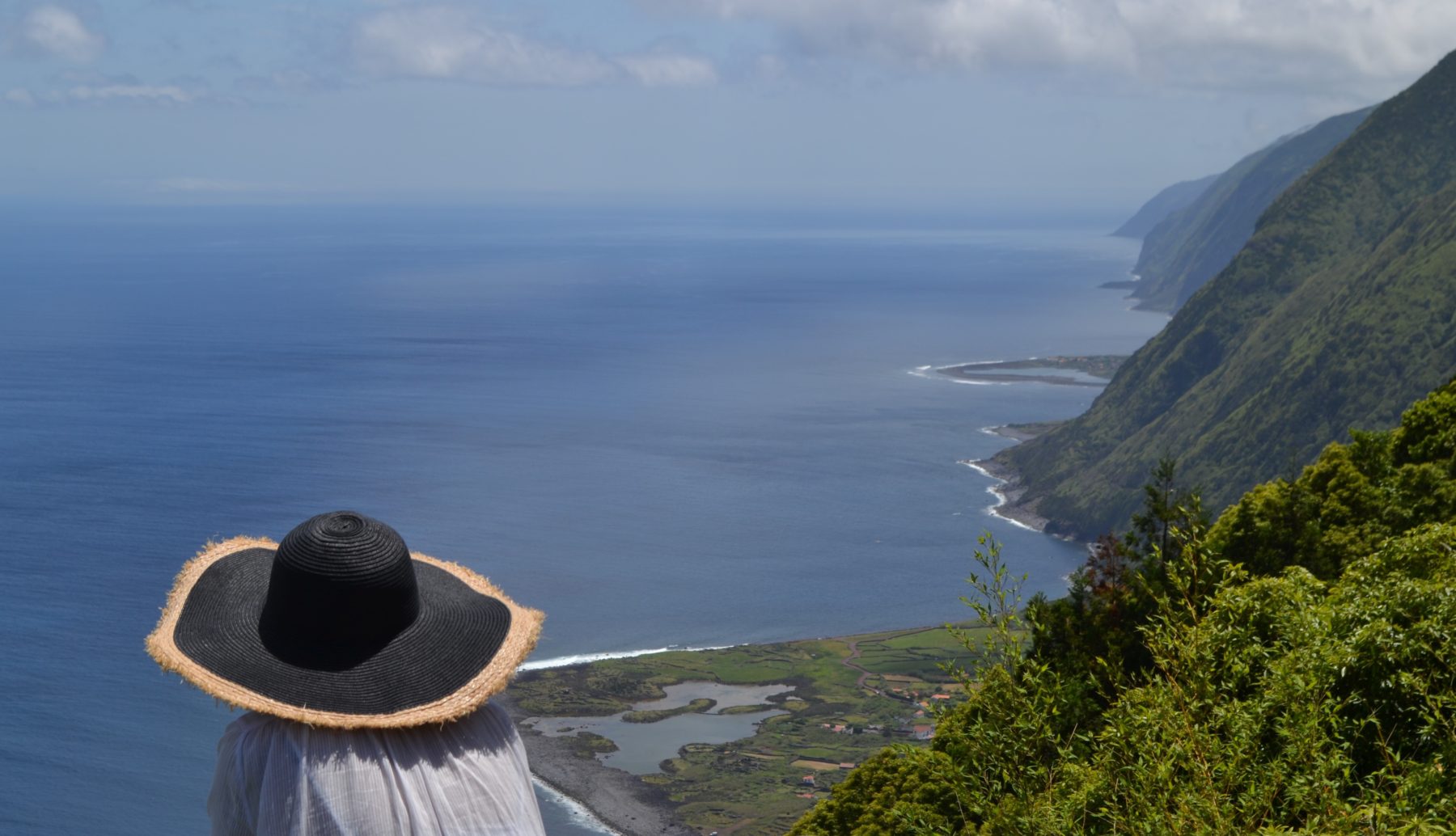
Fotografia de Carla Dias
The best way to experience these wonders is through hiking trails, where you can observe agricultural land and stone houses along the way, providing excellent backdrops for unforgettable photographs.
Additionally, the island boasts lagoons, natural pools, sea bathing, historical heritage, quaint villages, and the production of coffee, cheese, traditional quilts, and much more. Not to mention that the island is the perfect option for tourists who love walking and engaging in sports such as surfing, snorkeling, and sailing.
Below are the main points of interest that deserve your visit:
Índice de conteúdos [ocultar]
- Velas de São Jorge
- Calheta de São Jorge
- Fajã da Caldeira do Santo Cristo
- Fajã do Ouvidor
- Fajã dos Cubres
- Fajã dos Vimes
- Fajã de São João
- Manadas
- Grutas do Algar do Montoso
- Piscina Natural do Simão Dias
- Ponta dos Rosais
- Pico da Esperança
- Ilhéu da Ponta do Topo
- Piscina ou Zona da Urzelina
- Piscinas Naturais das Velas
- Café Nunes
- Museu de São Jorge
Velas de São Jorge
Velas is a village located on the southern coast of São Jorge, notable for its architecture from past eras, surrounded by lush vegetation and a beautiful cove, contributing to the striking natural landscapes of the area.
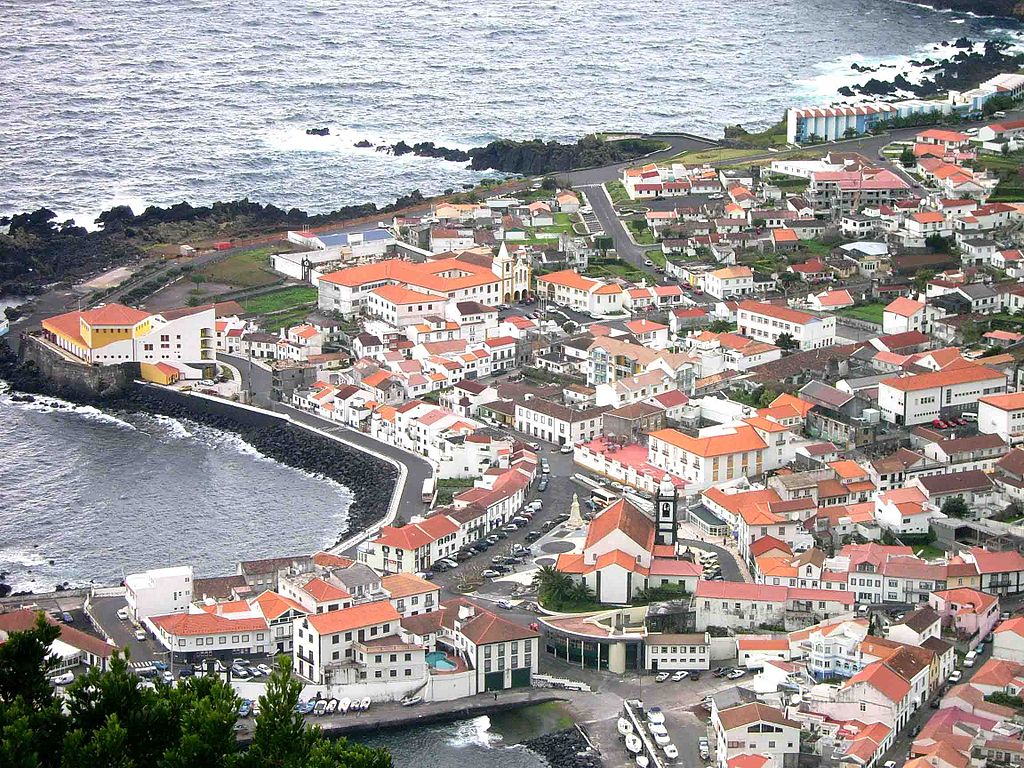
Photo by José Luís Ávila Silveira/Pedro Noronha e Costa
It is considered the oldest settlement in São Jorge, maintaining its rural characteristics. The main attractions of the village include its historical heritage, such as the Church of São Jorge, also known as the Matriz das Velas, built in the 17th century, the Fortress of Nossa Senhora da Conceição das Velas, dated 1644, and the Fortress of Nossa Senhora do Pilar, erected between 1797 and 1799, where the walls protecting the island from attacks by pirates and privateers are located, as well as other attractions like the Museum of Sacred Art, which displays liturgical and religious pieces.
Strolling through the streets of Velas is a great option for those who enjoy tranquility, allowing you to enjoy places like the Jardim da Praça da República, the elegant building of the Paços do Concelho, built in 1719, and Largo João Inácio de Sousa, where the Irmandade de Santa Casa de Misericórdia is located.
Another point not to miss in your planning is the Marina das Velas, offering a magnificent view of the island. For those interested, there are boat trips to various locations.
Calheta de São Jorge
The village of Calheta was founded in 1483 and saw significant growth due to easy communication with the neighboring island of Terceira. It is also located on the beautiful southern coast of São Jorge, like Velas, and is made up of five parishes (Calheta, Ribeira Seca, Norte Pequeno, Santo Antão, and Topo).
The Matriz Church, built in the 16th century, was the victim of a fire in 1639 and, after its reconstruction, suffered further destruction from an earthquake in 1757, taking over 30 years for a new reconstruction.
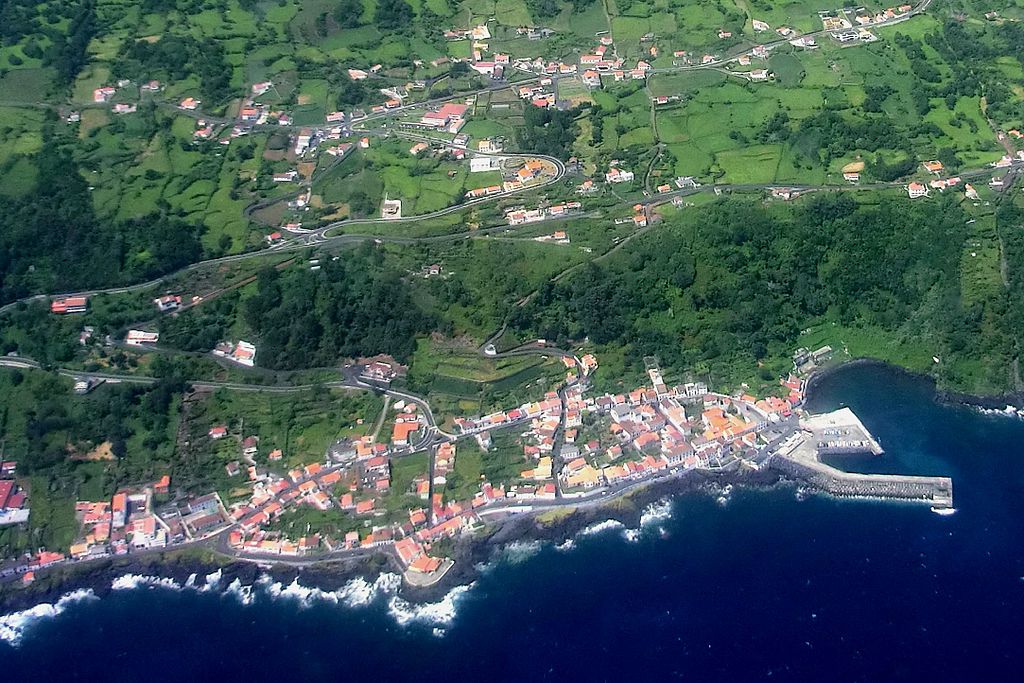
Photo by Dreizung
The economy in this locality highlights livestock, agriculture, and fishing activities. The main product is São Jorge Cheese, a true delicacy considered the hallmark of this island.
In addition to cheese, traditional handicrafts and pastries are also prominent. The area also boasts a rich natural heritage, consisting of various fajãs and breathtaking landscapes.
The architecture is characterized by a rural style with constructions made of stone masonry. Lastly, in terms of culture, the people of Velas are known for their musical talents, with several philharmonic bands.
Fajã da Caldeira do Santo Cristo
Classified as a Natural Reserve by the Government of the Azores in 1984, the Fajã da Caldeira do Santo Cristo is located on the northern coast, in the parish of Ribeira Seca, municipality of Calheta, and is one of the most beautiful fajãs on the island, featuring an immense variety of fauna and flora species in the region, particularly the delicious clams.
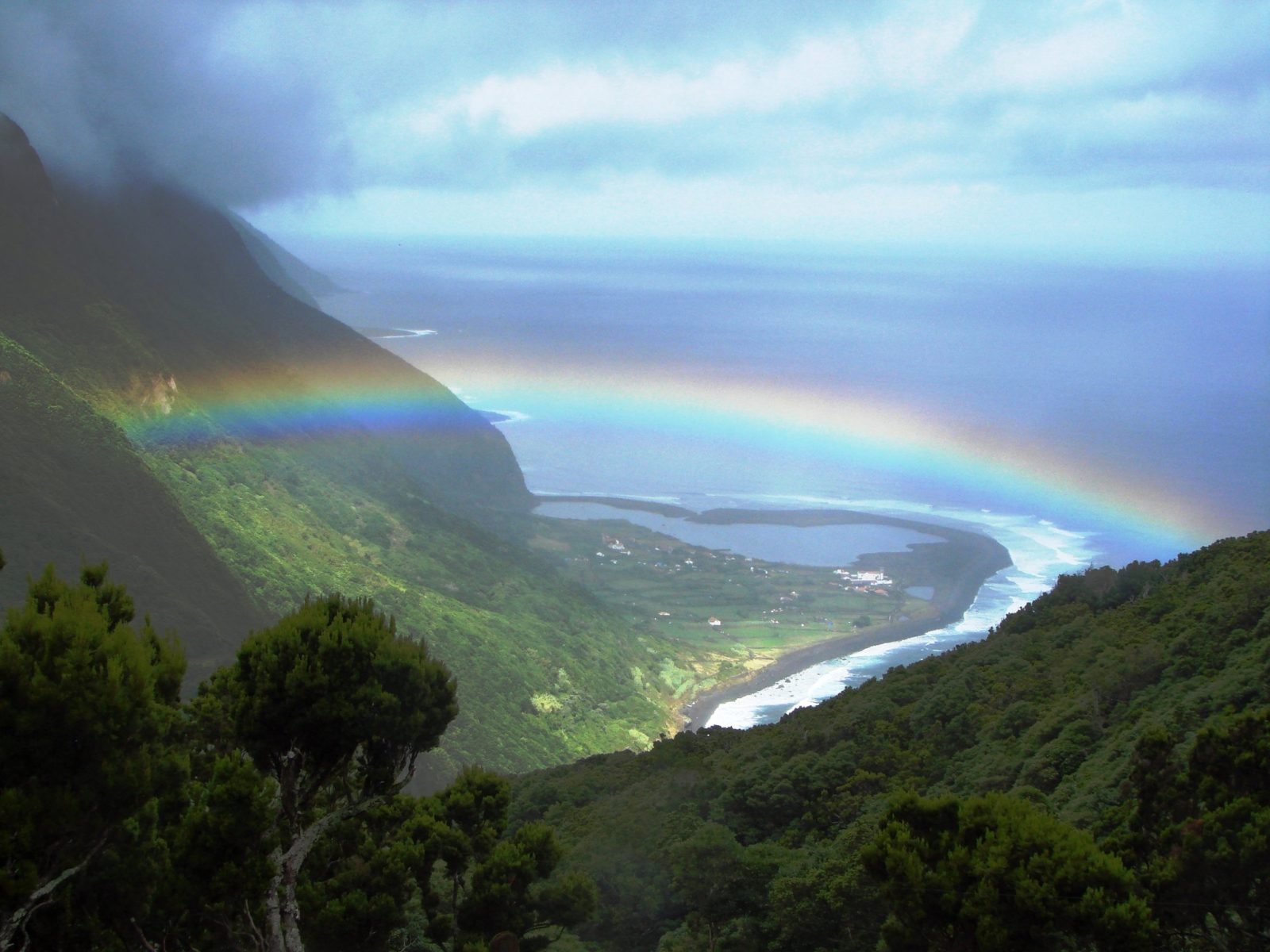
Fotografia de António Faria
At the site, there is the Chapel of Santo Cristo, built in 1835, which receives pilgrims every year, especially during the Feast of Santo Cristo, held on the first Sunday of September.
To reach this fajã is not easy, but the hiking trail offers tourists indescribable landscapes, certainly unlike anything they have seen before. For sports enthusiasts, this place is ideal for surfing and bodyboarding. Highly recommended!
Fajã do Ouvidor
Located on the northern coast of the island, the Fajã do Ouvidor, also known as Fajã do Porto, features a much more modern structure compared to the other fajãs, with residential and commercial houses, but without losing the rural essence of times past.
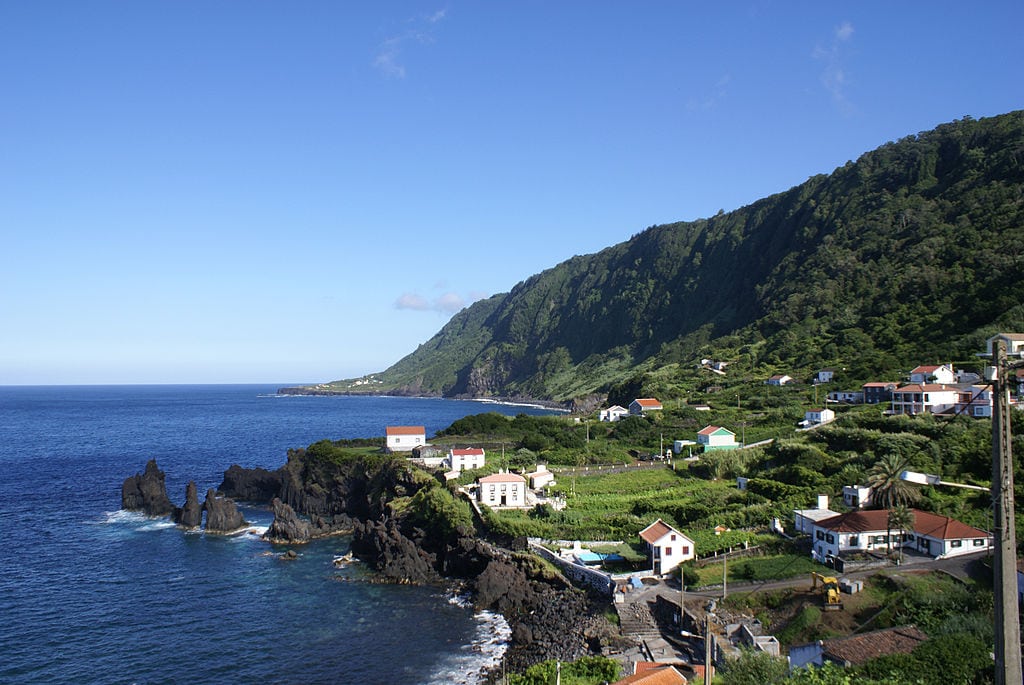
Photo by José Luís Ávila Silveira/Pedro Noronha e Costa
This locality features the Chapel of Our Lady of Sorrows, built in 1903, with annual celebrations in honor of the patroness, always on the third Sunday of September.
Another highlight is the port, classified as one of the best on the northern coast of São Jorge, as well as the fantastic natural pools, easily accessible, close to the sea bathing area, with crystal clear and impressive water. A must-visit for anyone looking to relax.
Fajã dos Cubres
Holder of the title of one of the 7 wonders of Portugal in the category of Sea Villages, the Fajã dos Cubres is one of the most visited places on the island, filled with natural beauties that captivate all tourists who pass through.
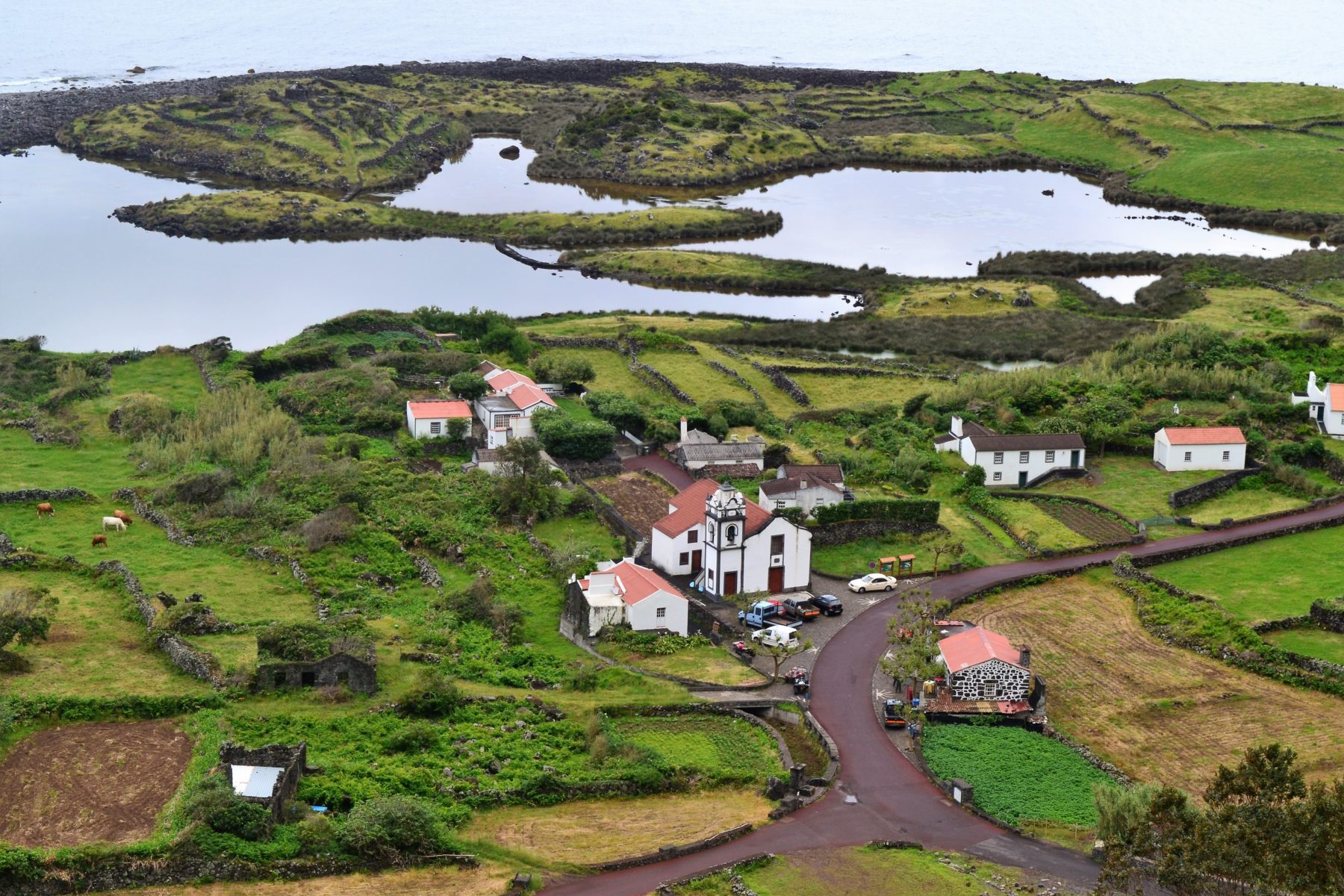
Fotografia de Carla Dias
It is located in the parish of Ribeira Seca, municipality of Calheta, in a flat area resulting from mass movement, and the “cubre” derives from the plant of the same name, which is quite common in the region.
One of the historical attractions of this fajã is the Chapel of Our Lady of Lourdes, built in 1908, which is highly sought after by pilgrims due to its well water, considered “miraculous” and believed to have healing powers for various ailments.
Fajã dos Vimes
Located on the southern coast of the island, in the parish of Ribeira Seca, municipality of Calheta, the Fajã dos Vimes is well known for its traditional quilts woven on pedal looms, a common activity in the past that takes up to 5 days to complete a single quilt.
Every year, this fajã celebrates the Feast of Corpus Christi, attracting thousands of people from São Jorge to the site, where the traditional dish offered by the local population is fresh fried fish from the fajã’s port, accompanied by limpets, yams, and potatoes, along with delicious wine.
The region produces corn, barley, coffee, beans, yams, and vines. Although small, Fajã dos Vimes provides a warm welcome to visitors.
Fajã de São João
Considered the largest fajã on the southern coast of São Jorge, Fajã de São João was settled in the second half of the 16th century. In 1686, this region was attacked by a pirate ship from Salé, which assaulted the population and destroyed the fort built for defense against pirates and privateers. Additionally, on January 1, 1980, it was affected by an earthquake.

Fotografia de Carla Dias
Thanks to the repairs and efforts of the population, it is now the preferred summer spot for noble families, as well as a reference in wine production. Its architecture is quite striking, characterized by typical stone houses with three-hinged windows.
The small agricultural productions, a typical and subsistence activity in the region, complete this picturesque fajã.
Manadas
The parish of Santa Bárbara, popularly known as Manadas, belongs to the municipality of Velas and features various natural beauties, with predominantly mountainous geography, forming part of the Fajã das Almas.
The small Porto dos Terreiros is of significant value to the locality, used for sport fishing and summer activities. However, what stands out most in Manadas is its 18th-century Parish Church, dedicated to Santa Bárbara, a baroque structure abundant in wealth.
Inside, you can observe mosaics that recount the history of Santa Bárbara, as well as a gilded altar and a cedar wood ceiling. For those who enjoy diving into history, this is a must-visit.
Grutas do Algar do Montoso
The Grutas do Algar do Montoso is a tourist attraction for adventure and cave lovers, where you can explore the island’s natural cavities, as well as their formation, constitution, and transformation, which have undergone an evolutionary process over time.
This incredible attraction is located in the municipality of Calheta, on Pico do Montoso, in the Acaçarias site. Its origin is specifically due to volcanic phenomena, through lava tubes and lava flow movements.
A guide is recommended for the visit, due to the complexity of the site.
Piscina Natural do Simão Dias
Located in the Fajã do Ouvidor, the Piscina Natural do Simão Dias is a must-stop attraction, a spectacular and breathtaking place.
Access is quite easy and quick, down a staircase between rocks. Visitors will enjoy a rocky structure and the contrast of its dark color against the blue sea during the walk.
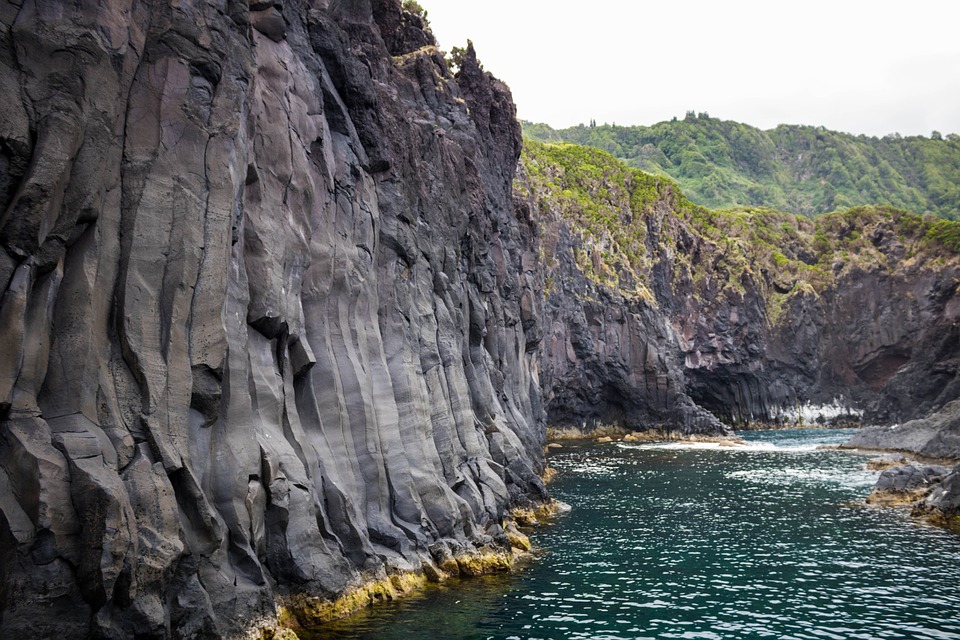
The waters are clear and have a very pleasant temperature, making it ideal for snorkeling. This is a place that should not be missed on any travel itinerary, offering unique moments of peace and tranquility.
Ponta dos Rosais
Located on the northwestern tip of the island, Ponta dos Rosais is a place of great importance for São Jorge, as it is home to a large number of nesting seabirds, such as the roseate tern, common tern, and Cory’s shearwater.
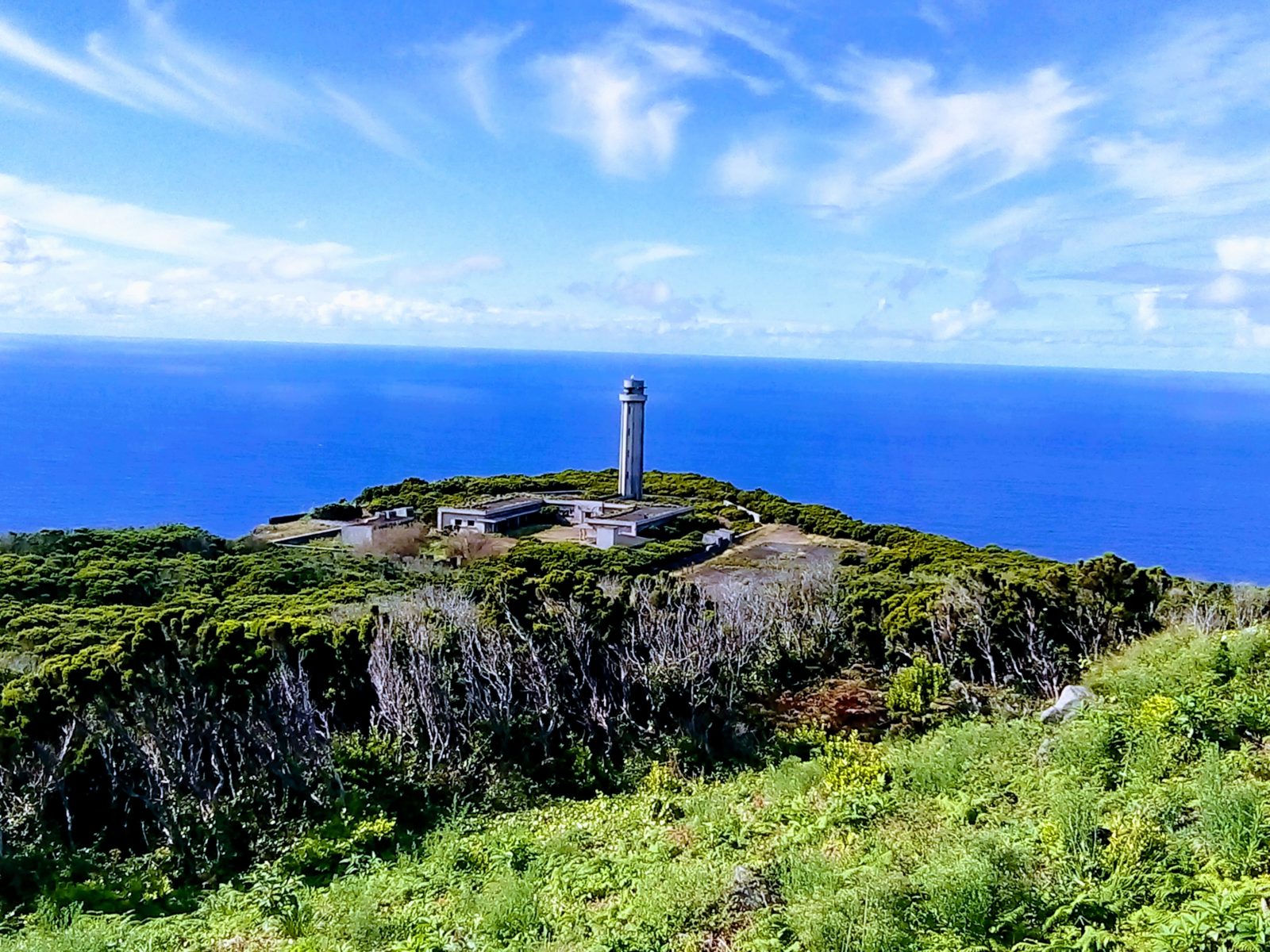
Fotografia de Ricardo Brandão
In addition to the fauna, the region also features a diverse flora, highlighting heather and forget-me-nots.
Ponta dos Rosais is classified as a Natural Reserve, due to the need for permanent preservation, and is approximately 200 meters above sea level, offering views of the neighboring Island of Pico, which rises to 2,351 meters, on clear days.
Pico da Esperança
Located in the parish of Norte Grande, municipality of Velas, Pico da Esperança attracts mainly tourists who love trails and enjoy unique views for photography, thanks to its rich vegetation and the ocean’s blue.
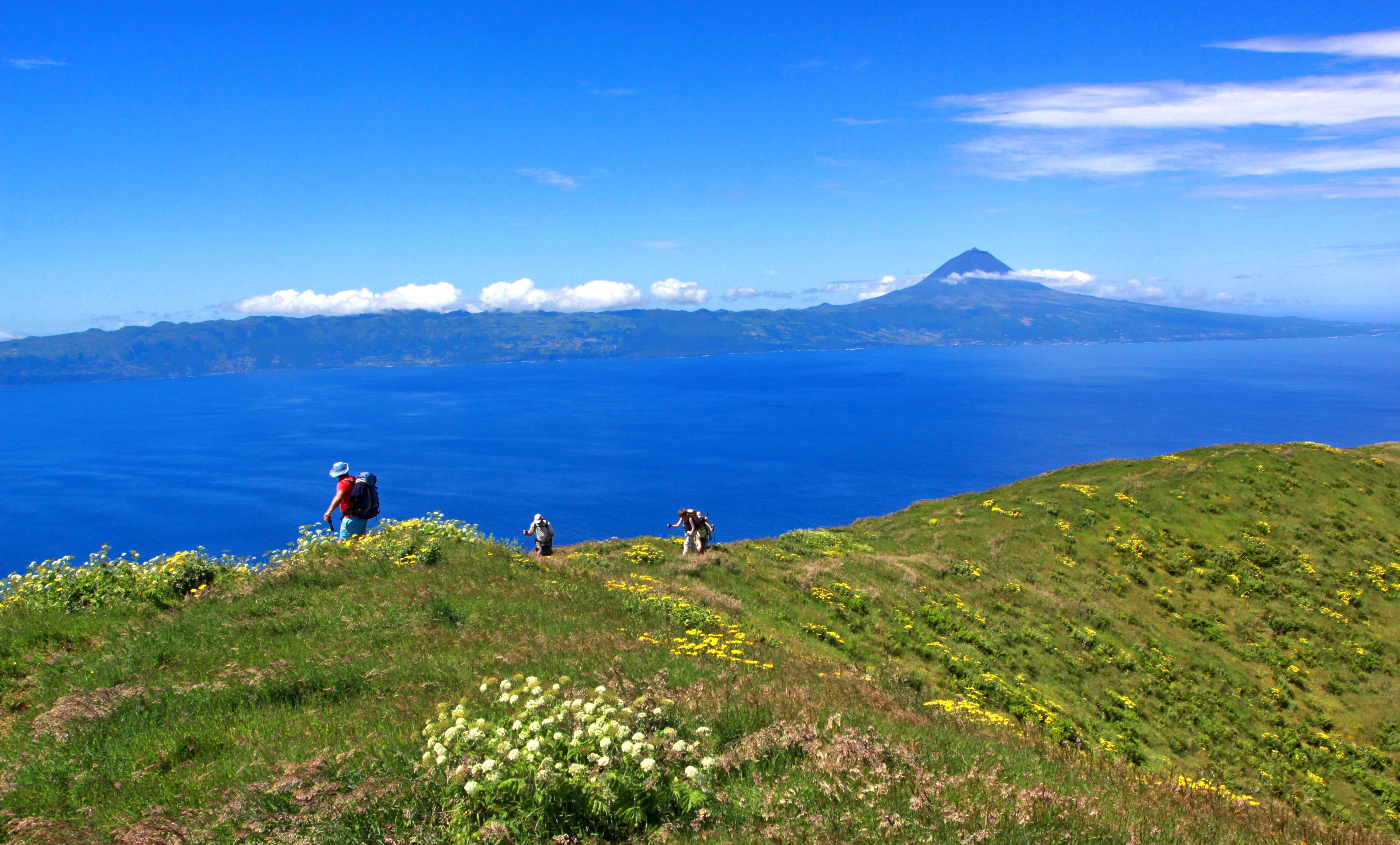
Photo by Guillaume Baviere
It has an altitude of 1,053 meters, and its origin is linked to the volcanic phenomena that occurred in the past. From the top, it is possible to see the neighboring islands that make up the central group (Terceira, Graciosa, Pico, and Faial).
This is an ideal hike for lovers of walking trails, and it offers a fantastic panorama of São Jorge Island. A must-see!
Ilhéu da Ponta do Topo
The Ilhéu da Ponta do Topo is located on the eastern tip of the island and is considered a perfect place for bird nesting.
It has a flat surface composed of basalts and tuffs originating from the Topo Volcanic Complex, and due to the process of erosion, it is about 400 meters away from the island.
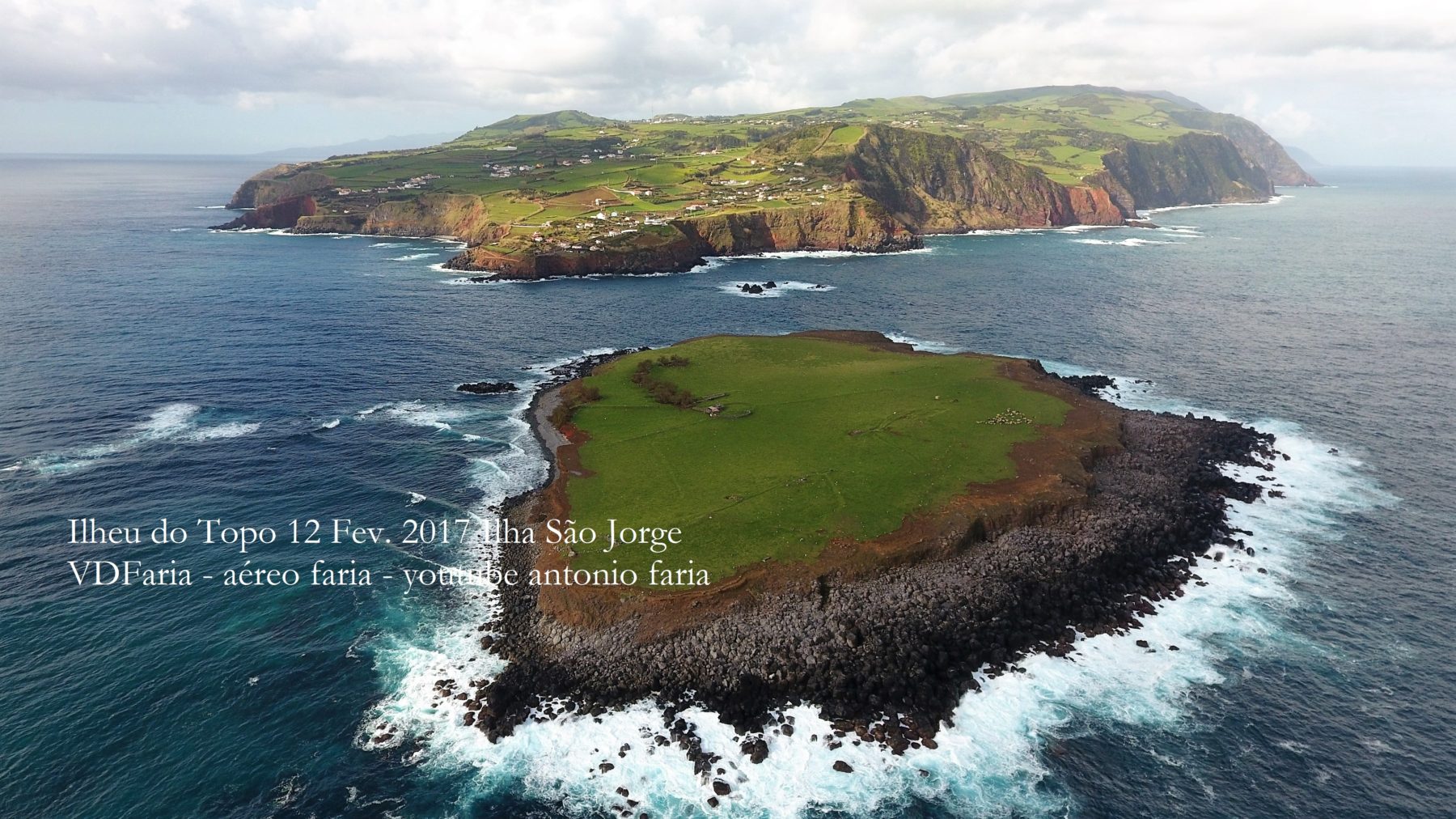
Fotografia de António Faria
It is an excellent spot for diving, not to mention the beautiful natural landscapes surrounding it. This geosite holds great regional value and is of significant scientific, educational, and tourist interest.
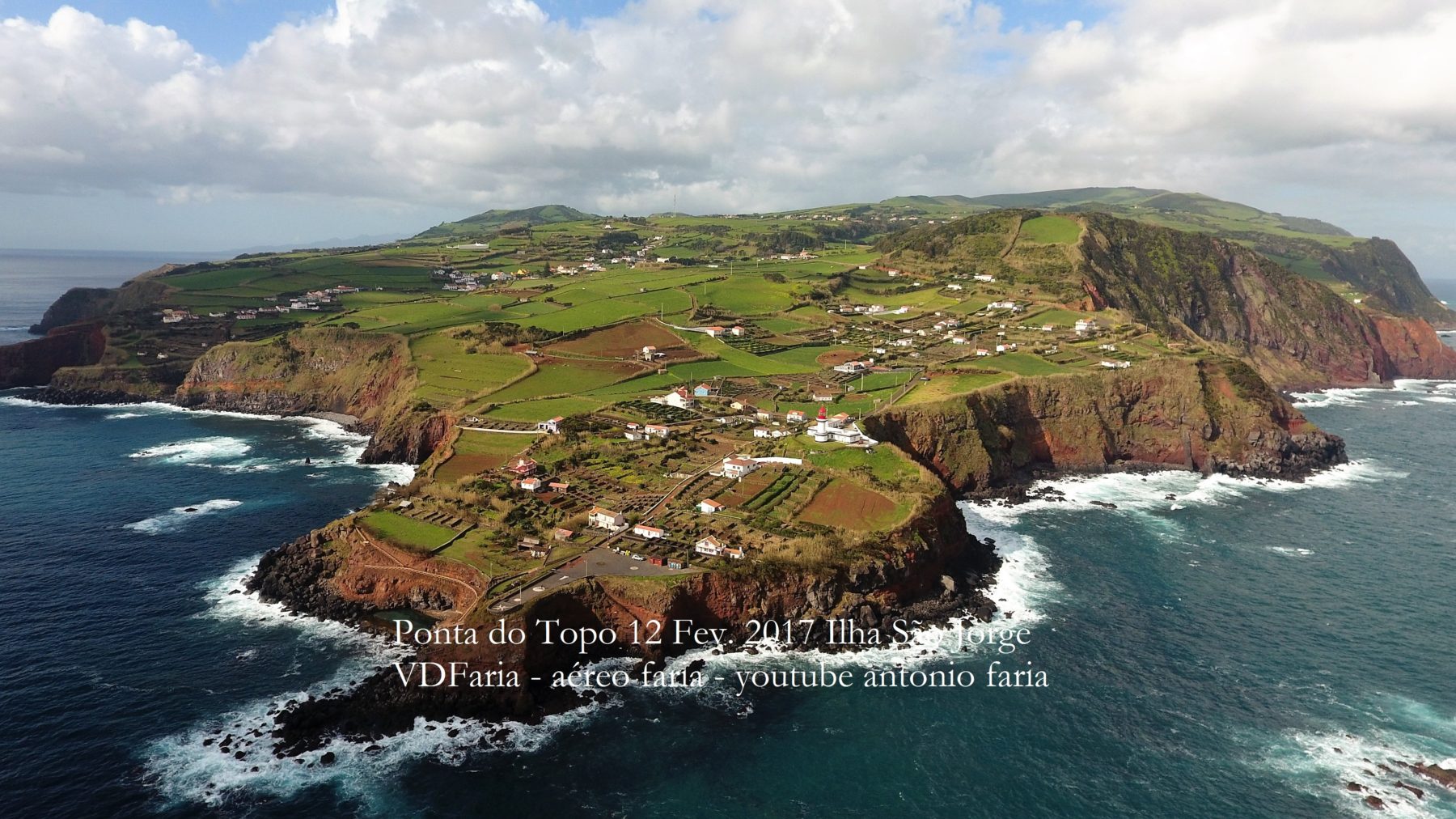
Fotografia de António Faria
Piscina ou Zona da Urzelina
This is one of the locations that attract the most visitors interested in swimming on the island, located in the picturesque parish of Urzelina, on the southern coast of São Jorge.
This pool is very popular with families and young people, offering unforgettable moments of leisure and comfort. This area is also common for diving and snorkeling, especially in the natural pools of Urzelina. Be sure to visit!
Piscinas Naturais das Velas
Located in the cozy village of Velas, on the southern coast of São Jorge, the Natural Pools attract thousands of tourists who travel to the Azores every year, especially during the summer.
Their formation occurs from basalt rocks originated from the solidification of incandescent lava in the sea, enchanting visitors with their beauty, thanks to the contrast between the volcanic color and the deep blue of the vast Atlantic Ocean.
Access to the pools is quite easy, and the location offers good support facilities for bathers, such as restrooms, showers, a bar, and surveillance. It is an excellent option for families and groups, and of course, for those who enjoy swimming!
Café Nunes
The Café Nunes is where you can find a fantastic coffee plantation located in Fajã dos Vimes, São Jorge Island, attracting visitors from various countries around the world to taste the local espresso made from this delicacy.
The main reason for this success is Manuel Nunes, who claims to produce between 100 to 150 kg of coffee per year on the land located behind his house.
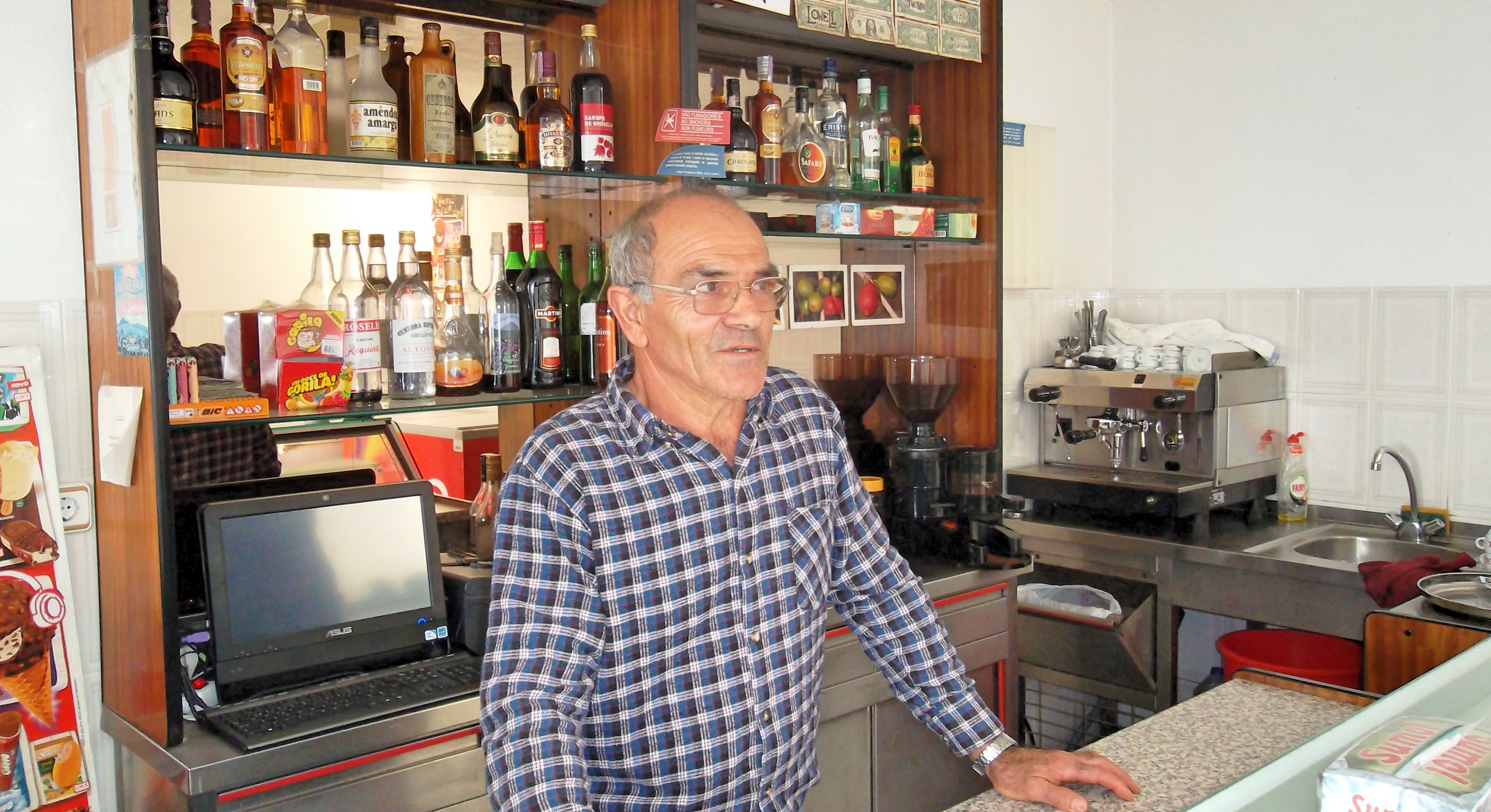
Photo by Rádio Lumena
The cultivation of the beans originated in the 19th century when coffee plants arrived on the island through an emigrant from Brazil, adapting very well to the typical microclimate of the fajãs.
Thus, after cultivation, the coffee is roasted and served as the only coffee in the region, and some say that this coffee has a strong and unmistakable flavor.
It is an incredible experience to visit Café Nunes, where visitors will learn all about the history and production of coffee and will have the privilege of tasting and touring the coffee plantation.
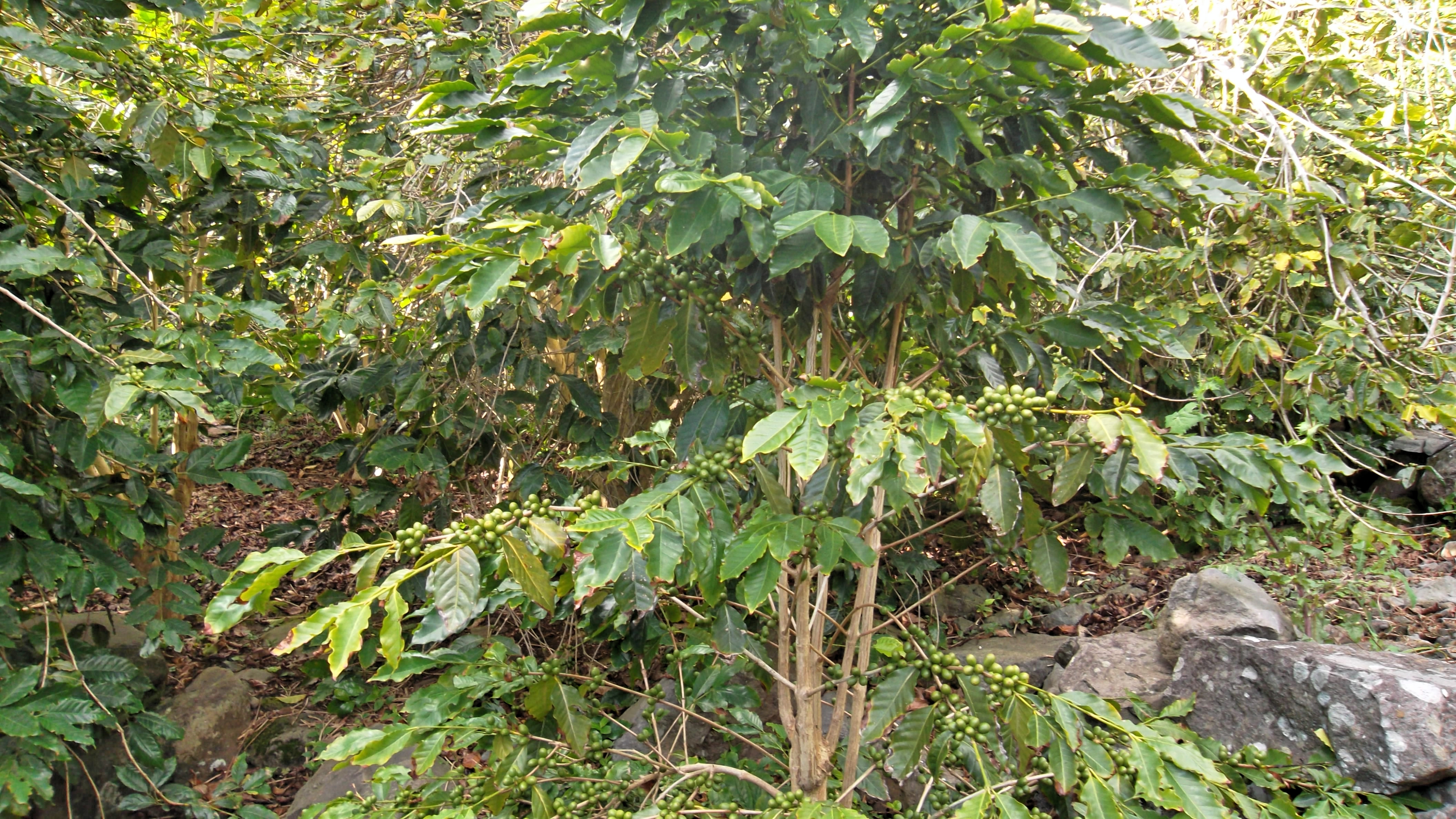
Photo by Rádio Lumena
In addition, the Nunes sisters also produce handicrafts, dedicating themselves to weaving traditional wool and cotton quilts. A must-visit for everyone in São Jorge!
Museu de São Jorge
Located in the municipality of Calheta and officially opened in 1991, the São Jorge Museum features as its main attraction the trajectory of Azorean musician and composer Francisco de Lacerda through a rich ethnographic collection. On the first floor of the museum, there is a tribute to the composer, who directed several orchestras in France and Switzerland.
You can see the instruments hanging from the ceiling, as well as band uniforms, pianos, and old turntables. The story of this great Azorean musician born in Ribeira Seca is truly fascinating.
Hours of Operation
Summer (April 1 to September 30)
Tuesday to Sunday and holidays: 10:00 AM to 5:30 PM
Closed on Monday
Winter (October 1 to March 31)
Tuesday to Sunday and holidays: 9:30 AM to 5:00 PM
Closed on Monday.
Contact
Rua José Azevedo da Cunha
9850-038, Calheta
Phone: (+351) 295 416 323
Email: museu.flacerda.info@azores.gov.pt
Learn more about São Jorge Island:
> Photos of São Jorge
> Videos of São Jorge
> Restaurants in São Jorge
> Companies in São Jorge
> Accommodations in São Jorge
If you are planning to travel to the Azores archipelago, be sure to visit São Jorge Island and discover this enchanting place filled with fascinating points of interest!
 Quick links and suggestions
Quick links and suggestions
Travel insurance with 15% discount for the Azores or another destination Click here to simulate >
Looking for trips to the Azores? See these promotions >
Rent a car in the Azores? The best rent-a-car >
Activities and Experiences during your stay? Check it out here >
See Whales and Dolphins? Book now online >
Have you had a canceled or delayed flight in the last 3 years? Receive your compensation here >


